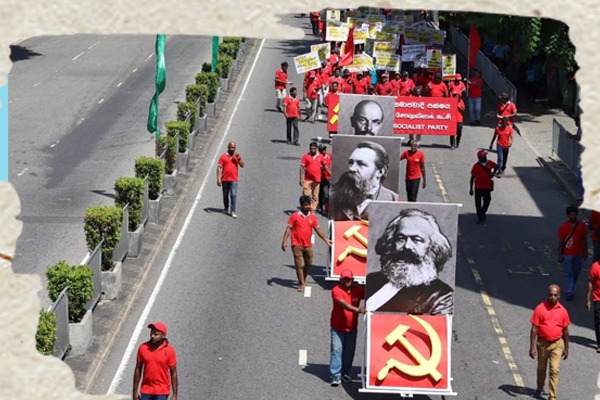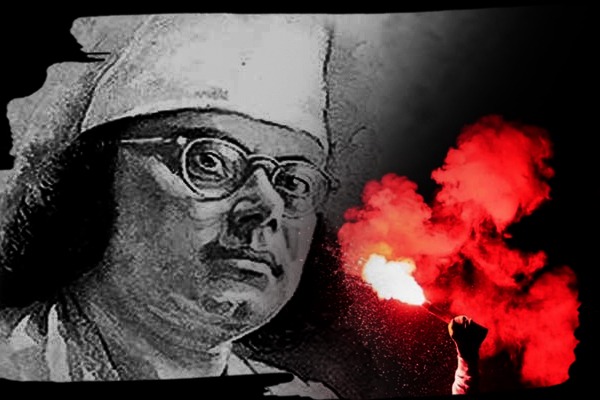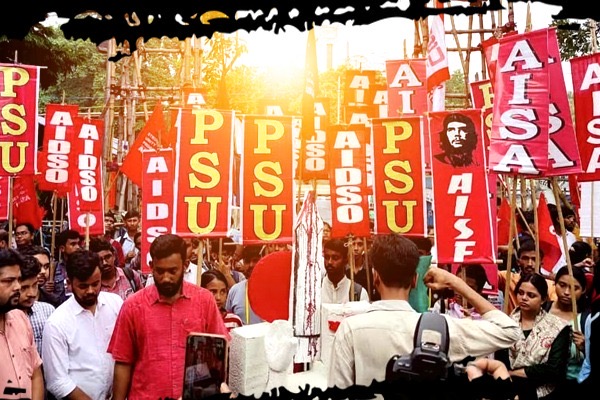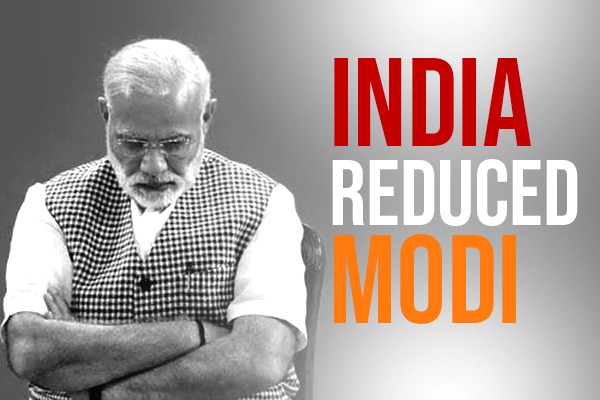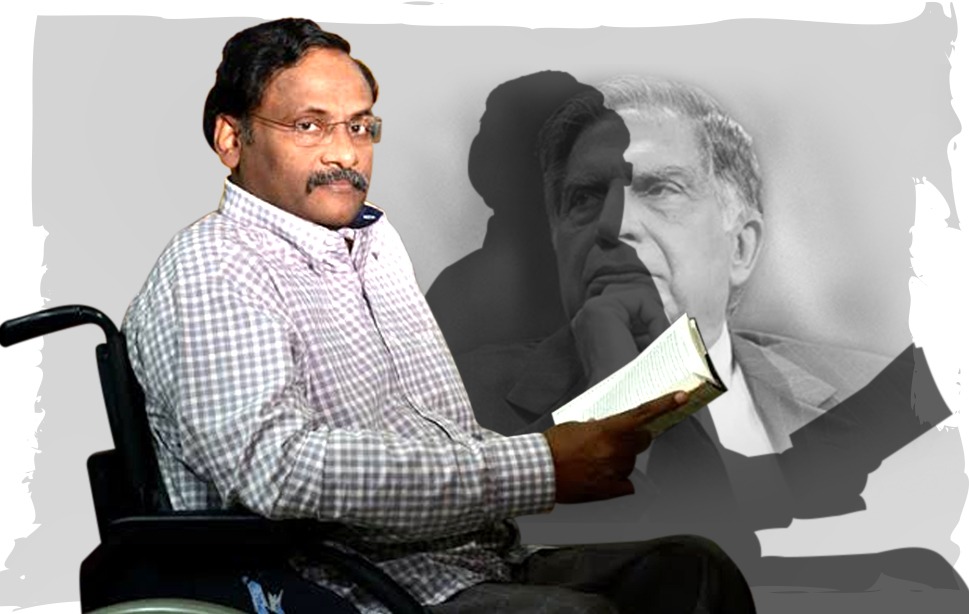The existing neo-liberal economic system was introduced to Sri Lanka in the 1970s, and implemented by the United National Party, after the change in Government in 1978, by their National Party Leader, J.R. Jayawardene, who was the agent of the world neo liberal camp, led by the USA and Britain.
However, due to the civil war and youth uprisings in Sri Lanka at the time, neo liberal reforms could not be implemented rapidly. After the end of the civil war in 2009 though, the Mahinda Rajapaksa regime expedited neo liberal reforms, where they planted the myth that attracting foreign investments would resolve the economic crisis. In order to attract foreign investments, they made it seem as though infrastructure facilities must be developed in the country. This led to massive road constructions and other unnecessary and ineffective development programs being rolled out, utilizing billions worth of loans obtained from international monetary institutions, Governments and sovereign bonds. In 2022, the total foreign debt amounted to more than 53 billion US dollars, and Sri Lanka has to pay 6 billion US dollars as a loan instalment. This was increased to 6.9 billion US dollars in 2023. Sri Lanka obtained 47% of its foreign debts via the sovereign bond market, 13% from the Asian Development Bank, 9% from the World bank, 10% from China, 10% from Japan, and 2% from India.
The country’s economy was unable to bear the extent of debt. In March 2022, having serviced a 6 billion US dollar loan instalment, the country’s foreign reserves evaporated. The remaining reserves were insufficient to pay for imports, which then resulted in a dire shortage of fuel, pharmaceutical drugs and other essential items. As a result of this, there were long queues for fuel and gas, and medium and small scale businesses had collapsed due to a shortage in raw materials and imports. The Government officially declared that the country is unable to pay back the loan instalments. This unprecedented economic bankruptcy paved the way to a two digit inflation, unemployment and poverty. Finally, public outcry and tension broke out, and thousands of people came out to the Galle Face green to commence an occupy campaign, demanding the resignation of the President at the time, Gotabaya Rajapaksa.
The Galle Face occupation was one of the most successful protests in world history, where the people were able to kick out one of the most powerful Presidents, prior to the end of his tenure, and bring down a political dynasty. The traditional and popular perception was that elections are the only mechanism by which to remove undemocratic and anti-people regimes. But the Galle Face protest proved how the power of the people could remove unaccountable regimes and rulers, without shedding any blood.
During the Galle Face struggle, the Government deployed maximum military power to disperse it. More than 5000 people have been arrested, and nine lost their lives in the course of the struggle. However, the military too stepped down on July 09th, when millions flocked to Galle Face, calling for an immediate resignation of the President.
The protesters presented a declaration, with proposed solutions to the crisis. It was not just a document, but a manuscript calling for system change. It proposed to build participatory democracy, as an alternative to a failed representative democracy.
In this post Aragalaya/Porattam (struggle) era, once again the rulers are attempting to restore the status quo. However, one part of the Aragalaya continues to maintain the momentum of building people’s power, by establishing people’s councils throughout the country, as an alternate model of participatory democracy.

The main contributing factors of the economic recession are trade deficit, debt crisis, depriving service income, financial and tax scams and corruption, State withdrawal from economic affairs and printing currency. In 2022, there was a trade deficit of eight billion US dollars due to new liberal economic policies. Import expenses were drastically escalating, in stark contrast to export income. As far as the debt crisis was concerned, as mentioned above, we were trapped in a web of debt. One of the main ideological misdirections of neoliberalism is that the State must not get involved in economic affairs, thus enabling the privatisation of public institutions – one of the main policies that were implemented.
As a result of this, instead of a public oriented, just, economic system, the entire economy was revolving around profit oriented trade, and the service sector was being developed, creating a bubble, where the benefits of the economy were not being distributed among the working class but, through the accumulation of capital, resulting in 65% of the economy being in the hands of 5% of the population. Apart from this corruption, fraud and scams in the import and export sector, and tax evasion by the business elite and super rich, was considerably high. According to the Global Finance Integrity Report, we lost approximately 40 million US dollars, due to import and export fraud. Furthermore, large companies have defaulted payments of about 950 billion rupees in taxes.
However, instead of recovering these taxes and misused public funds that have accumulated as capital, the Government decided to print more currency during the two year crisis period – with about three trillion rupees being printed. As a result of all this, the level of inflation drastically increased.
The main achievement of the Argalaya, was that it has established the concept of power beyond just the Parliament, demonstrating that people’s power can stand up to, and hold accountable traditional State establishments. However, as there were no already established mechanisms to continue this concept, the Movement for Peoples’ Council was established as a direct product of the Aragalaya. It is now in the process of mobilising people, and discussing the concept of power beyond the parliament, through the creation of people’s councils around the country.
Inevitably, there will be more public uprisings, as the existing neo liberal system does not have concrete solutions for the burning issues of the people. The public education system has already collapsed. The younger generation is desperate. The unemployment rate has drastically risen, with a considerable number of people having migrated, the rate of suicide on the rise, the spread of dangerous drugs, malnutrition and poverty levels reaching an all time high, religious institutions misleading the society and social values being eroded.
In the aforesaid circumstances, the society is demanding a real system change, rather than a mere change of faces periodically at an election. In order to do so, isolated protests are insufficient. We need a mass movement, with the participation of every segment of the society. Through such a mass moment, people should be called to do politics, and get involved in the political, economic and cultural spheres of society.
The capitalist regime is set on implementing IMF conditions, rolling out oppressive laws, postponing elections and adhering to the geopolitical and economic agendas of world superpowers.
India, being an emerging global superpower, is now in the process of taking control over the energy sector in Sri Lanka, whilst also strategically taking over business ventures by providing capital. This has paved the way for Sri Lanka to be trapped in the centre of an inter-imperial competition between superpowers, the USA and China.
Certain segments of the society, who were opposed to the Aragalaya, have attempted to dismiss the struggle as an “international conspiracy.” Certain political parties and the current President have attempted to portray the struggle as an anarchical uprising. So called social democrats interpreted it as being undemocratic and violent. Optimist groups describe it as a revolution. However, the 2022 Aragalaya in Sri Lanka, marks a historic moment in time, where a mass, radical struggle – a spontaneous uprising and show of people’s power, was able to shake the foundation of the capitalist establishment.
Although the Galle Face uprising was defined as a spontaneous public uprising, there were a series of incidents and protests leading up to the struggle that breathed life to it. The student movement organised a series of protests against the privatisation of education. Farmers continuously protested against the futile fertiliser policy. Multiple public protests took place against the undemocratic laws and actions taken by the Government. However, there is no doubt that the Galle Face occupy movement was the amalgamation of the above radical, anti neoliberal series of struggles.

